It’s normal for skin to have some texture, but if your skin has rough patches, acne scars, enlarged pores, flakiness, or bumps, it can cause it to look overly textured. This dulls the skin’s overall look, makes it feel rough, and creates blotchiness, all of which add years to your skin’s appearance.
We’ll walk you through what causes textured skin and ways you can treat it at home and professionally.
Understanding Textured Skin
Textured skin is easy to identify because it feels rough or bumpy and doesn’t look smooth. It usually affects patches of skin rather than all of it at once, causing an uneven appearance that makes the textured areas stand out.
Your go-to, quick-fix solution for most skin issues may be to reach for the concealer, but that doesn’t work well for textured skin. The coarse, uneven consistency can make concealer and foundation difficult to blend. Instead of covering up the problem, focus on protecting and nourishing your skin to reduce texture.
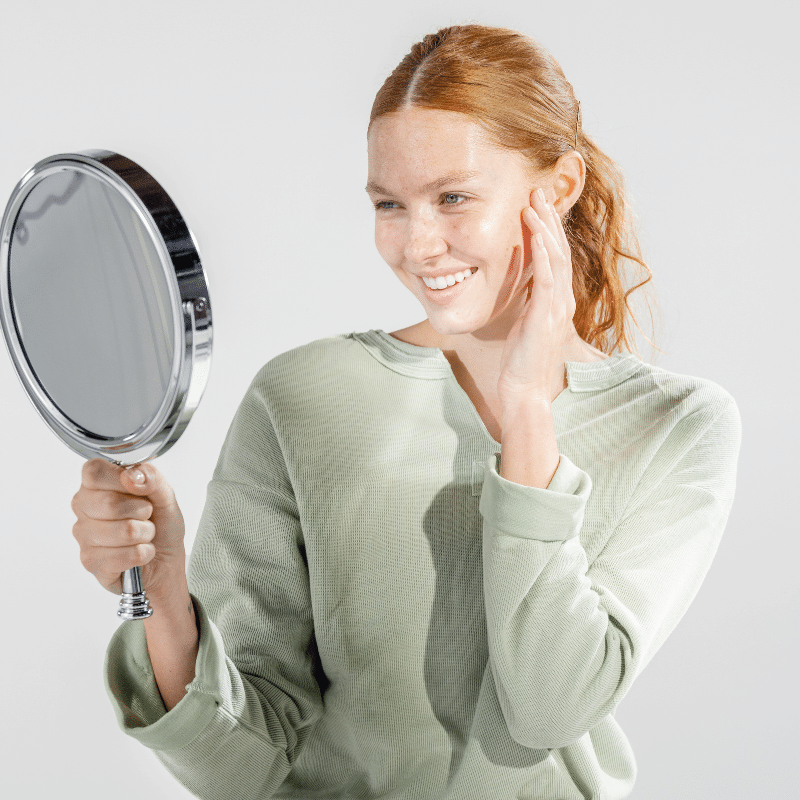
What Causes Textured Skin?
The first step to improving textured skin is to understand the cause. Textured skin has many causes, and each presents itself in specific ways. Review these common sources of textured skin to see which description matches your skin.
- Dead skin cells: Dead cells can build up on the skin’s surface, making it look rough and dull. If exfoliation isn’t part of your regular skincare routine and you don’t see any scars, acne, or tiny bumps, your textured skin may be from dead skin cell buildup.
- Acne scars: Acne is an unsightly nuisance during an outbreak but can also leave long-lasting or permanent scars. These scars often appear as small divots in the skin, creating an uneven texture on the skin’s surface.
- Environmental pollution: Exposure to pollution can create free radicals that break down collagen in the skin. As the collagen breaks down, it causes the skin to become less firm and can produce uneven texture.
- Sun damage: UV rays from the sun can cause cellular damage in unprotected skin. This damage causes uneven skin texture in the form of coarse, scaly patches.
- Aging: As skin ages, it loses important proteins such as collagen and elastin that are responsible for keeping skin firm and plump. Over time, this creates an uneven appearance in the skin.
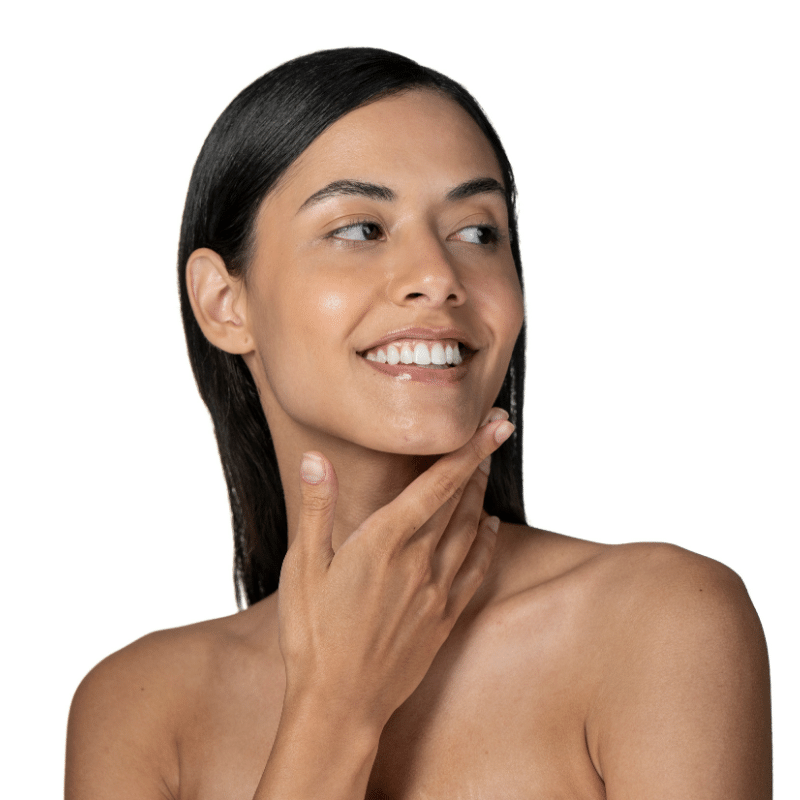
How To Get Rid Of Textured Skin
There are many ways you can treat textured skin to achieve a smooth, even appearance and protect your skin from future issues.
Protect Your Skin
Everyone knows that sunscreen is key to protecting skin from sun damage, but there’s more to it than simply dabbing some on in the morning. To make sure you’re actually protecting your skin, follow these tips.
- Choose a mineral-based sunscreen with SPF 30 or higher. Mineral-based sunscreens provide better skin protection than their chemical-based counterparts and are also better for the environment.
- Apply the right amount. You need approximately ⅓ of a teaspoon of sunscreen to cover your face and neck and about 1.5 oz (enough to fill a shot glass) for your body.
- Put sunscreen on at least 15 minutes before sun exposure.
- Reapply every two hours, as well as after swimming or sweating.
To further protect your skin, apply antioxidant-rich skincare products in the morning and evening, and cleanse your skin with a gentle cleaner after exposure to wildfire smoke or other environmental pollutants.
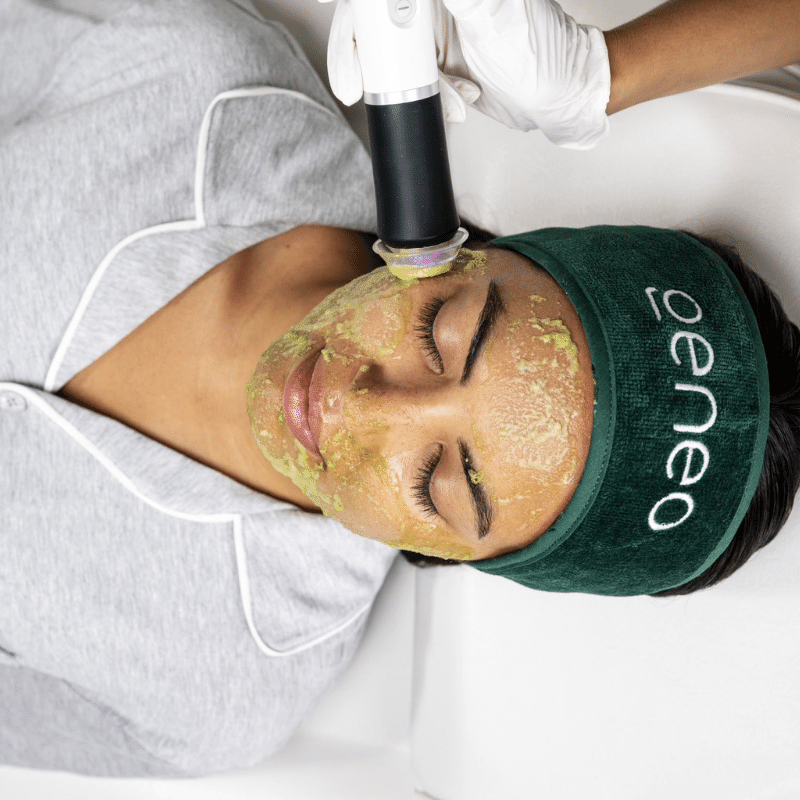
Exfoliate
Exfoliation is essential to any good skincare routine, and it’s especially important for improving skin texture. Incorporate exfoliation into your at-home skincare routine twice a week. You can use chemical exfoliants or physical options such as scrubs or exfoliating brushes. Physical exfoliants can damage the skin if used too aggressively, creating more skin texture issues. To use scrubs or brushes, gently massage them over the skin.
To use a chemical exfoliant, choose either an AHA- or BHA-based serum, toner, or cleanser. AHAs, such as lactic, glycolic, and malic acids, are gentle and excellent for people with sensitive skin. BHAs, such as salicylic acid, go deeper into the skin and help treat texture issues such as sun damage and acne. These can be harsher on the skin, so people with sensitive skin should avoid BHAs.
While it’s easy to do general exfoliation at home, you’ll get the most skin texture improvement with professional exfoliation treatments. Estheticians have access to more advanced treatments and more potent ingredients, and they have the training and expertise to use them safely and effectively.

Hydrate Inside + Out
Dehydrated skin can lead to flakiness and a rough texture, so staying hydrated is vital to maintaining healthy, smooth skin. The recommended daily water intake is 15.5 cups for men and 11.5 cups for women. You can also increase your hydration by eating water-rich foods like soup, cucumbers, celery, and watermelon.
To maintain moisture from the outside in, be sure to use moisturizer daily. Select a noncomedogenic moisturizer, as this won’t lead to breakouts or enlarged pores.
Add Proven Texture-Improving Ingredients to Your Skincare Routine
Many skincare ingredients have been proven to improve skin texture. Here are some of the most popular options to include in your skincare routine.
- Vitamin C is a powerful antioxidant that can improve texture by smoothing the skin and defending against free radicals caused by environmental pollutants.
- Retinol, a form of vitamin A, is a powerhouse ingredient that speeds up cell turnover, boosts collagen production, reduces the appearance of fine lines, and guards against breakouts.
- Green tea is a well-known antioxidant that can reduce the appearance of textured skin caused by inflammation, which is common for people with eczema, rosacea, or acne.
- Collagen is a protein the body naturally produces, though production slows as we age. It’s responsible for keeping skin supple and smooth.
- Noncomedogenic products are those that don’t contain ingredients known to clog pores. When trying to improve textured skin, it’s important to look for noncomedogenic products to avoid breakouts, enlarged pores, and other contributors to textured skin.
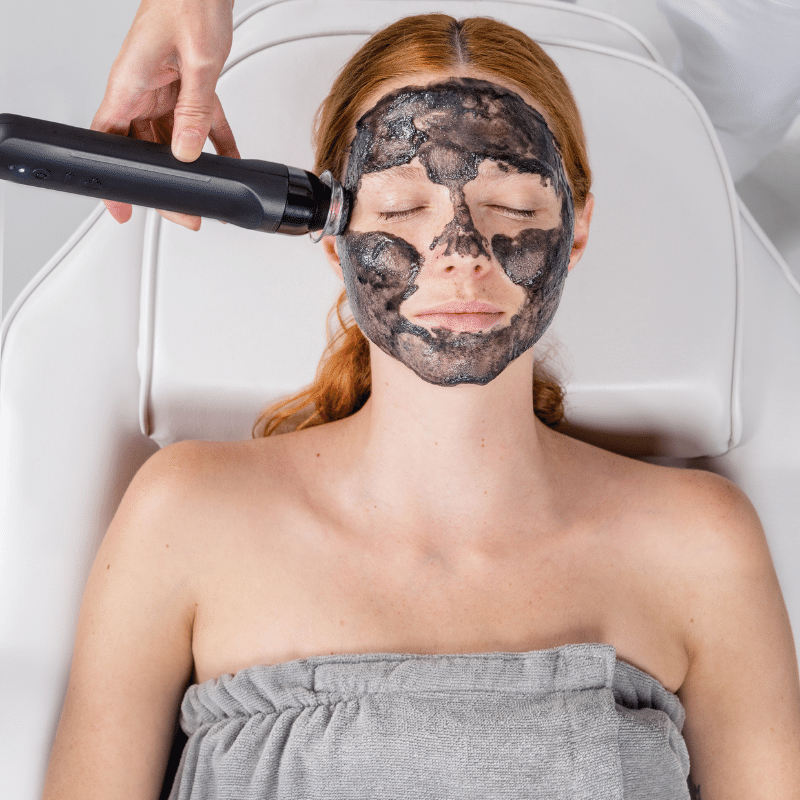
Try Professional Facial Treatments
Professional facial treatments are the best ally in the fight against textured skin. Estheticians have access to cutting-edge technology and powerful ingredients that get better, faster results than at-home skincare routines.
There are many options for professional facial treatments and procedures that help with skin texture. Chemical peels, microdermabrasion, laser resurfacing, and microneedling are all commonly recommended to treat textured skin; however, these are intense treatments that can result in several days of downtime while your skin heals.
Geneo offers gentle yet highly effective facial treatments to help smooth textured skin. Geneo facials provide long-lasting results with no downtime because they work with the body’s natural processes, such as oxygenation and skin cell renewal, to treat texture from the inside out.
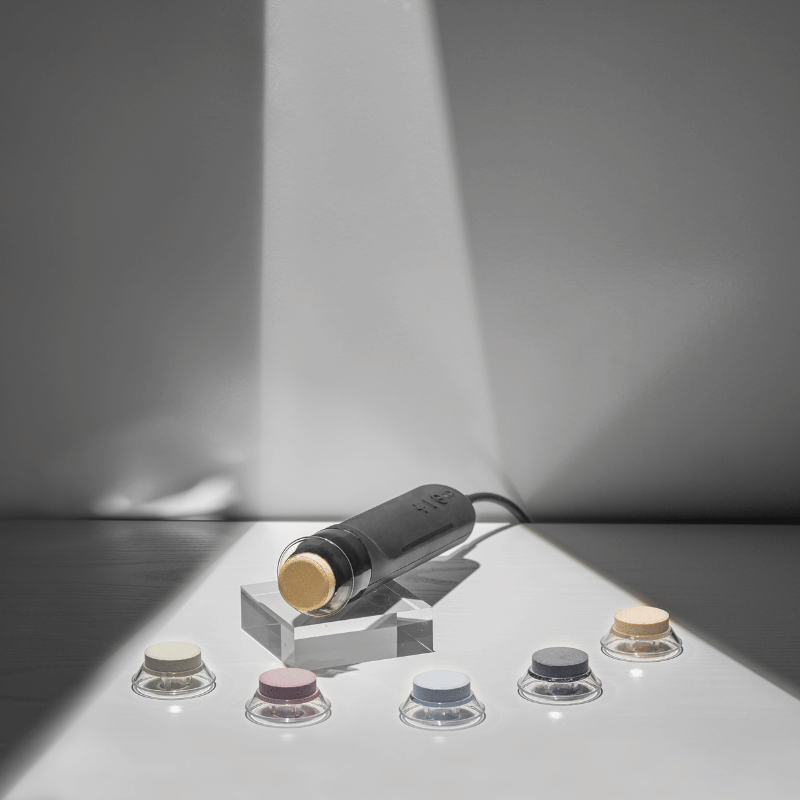
The Best Geneo Facial Treatments for Textured Skin
All Geneo facial treatments will improve skin texture, but the treatment options that have the biggest impact on skin texture are the Geneo Revive Facial and the Geneo Illuminate Facial.
Geneo Illuminate unifies skin tone, improves pigmentation, and rejuvenates the skin for a smoother complexion. It features these all-natural ingredients:
-
- Vitamin C: Brightens the appearance of dark spots and stimulates collagen production to improve skin texture.
- Kojic acid: Fades dark spots and evens skin tone.
- Carrot extract: Repairs skin cells and plumps skin texture.
- Prickly pear extract: Brightens dark spots and hyperpigmentation.
- Boldo tree bark: Contains antioxidant, anti-inflammatory, and brightening properties.
- Coconut oil: Moisturizes, reduces inflammation, and fights acne.
- Shea butter: Contains high concentrations of fatty acids and vitamins to soften the skin and provide anti-inflammatory and healing properties.
Geneo Revive reduces fine lines, improves texture, and smooths overall skin appearance. It features:
- Red algae: Contains anti-aging properties to inhibit enzymes that break down collagen in the skin, improve elasticity and reduce the appearance of fine lines.
- Caffeic acid: Increases collagen production and prevents premature aging.
- Retinyl palmitate: A milder form of retinol found in its natural state, which helps even skin tone and reduces sun damage.
- Ferulic acid: Strengths the skin barrier, smooths texture, and reduces the appearance of fine lines and wrinkles.
- Willow bark: A natural form of salicylic acid used to shed dead skin cells, decrease redness and inflammation, and treat acne.
- Edelweiss: Improves firmness and hydration for more supple skin.
- Vanilla: Contains antibacterial, anti-inflammatory, and antioxidant properties to help to slow down signs of aging like fine lines, wrinkles, and age spots.
- Shea butter: Contains high concentrations of fatty acids and vitamins to soften the skin and provide anti-inflammatory and healing properties.
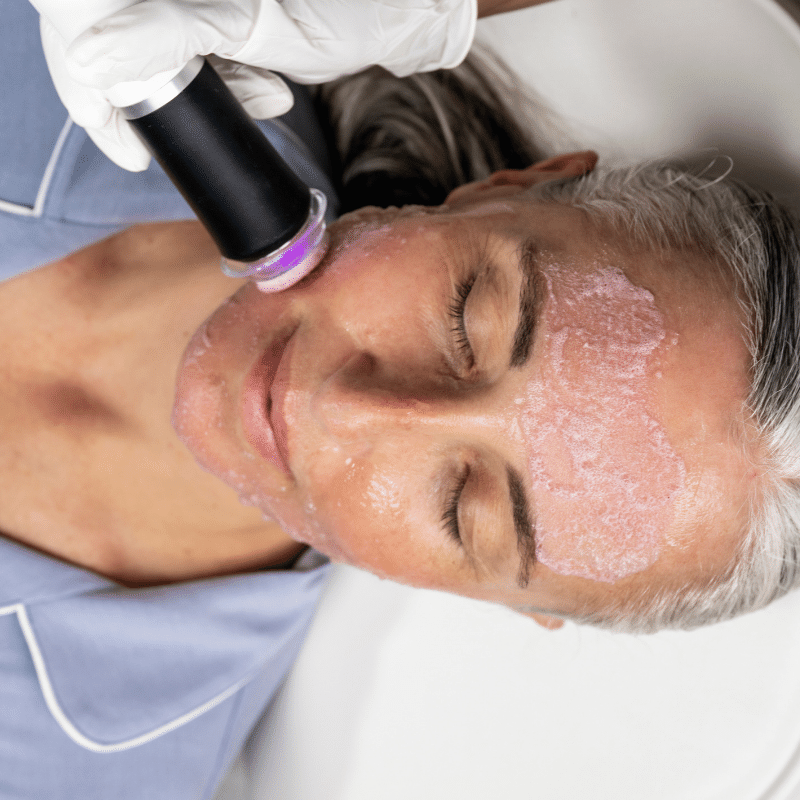
Professional Treatment for Textured Skin
Everyone wants smooth, beautiful skin, and it can be frustrating to deal with uneven texture. Luckily, there are many at-home and professional treatments available to improve textured skin. Geneo facial treatments are one of the best ways to improve skin texture quickly and painlessly. Find a Geneo provider today to book a Revive or Illuminate facial to treat your uneven texture.
Are you a skincare professional looking for effective new treatments for textured skin? Learn more about becoming a Geneo provider.



